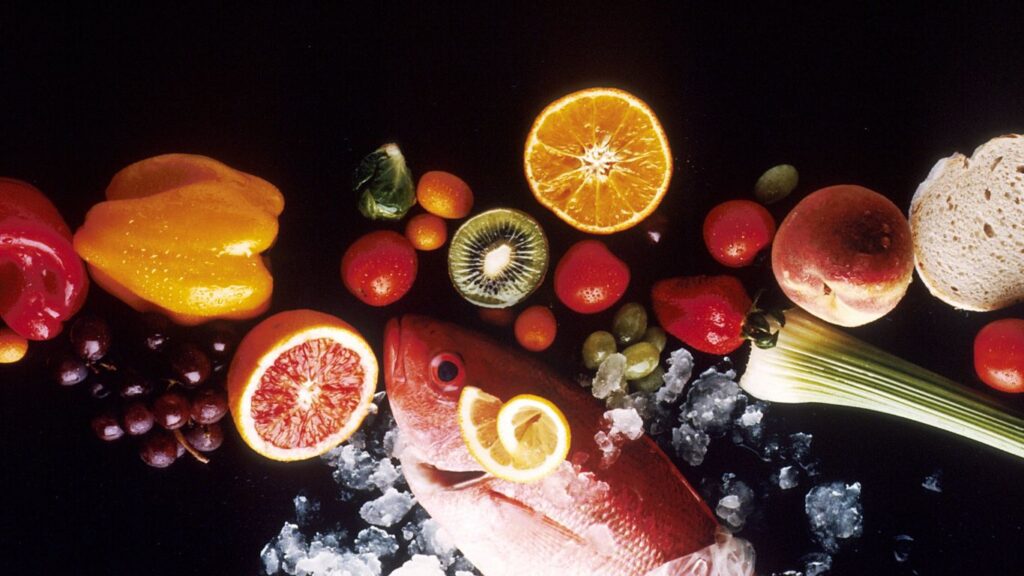Superfoods” refer to nutrient-rich foods believed to offer exceptional health benefits, often marketed as miracle solutions for various ailments. Their popularity has surged due to the promise of improving health through simple dietary additions. However, the term is primarily driven by marketing rather than science, with companies leveraging it to promote exotic or expensive foods. This creates misconceptions about their effectiveness, overshadowing the importance of a balanced diet. By critically analyzing their health claims, it’s essential to distinguish myths rooted in marketing from facts supported by credible research, providing a realistic understanding of these foods’ true benefits.
Superfoods: Myths vs. Facts
Understanding the Term “Superfoods”
The term “superfoods” emerged in the early 20th century, gaining traction in recent decades as health and wellness trends surged. Initially used to highlight certain nutrient-dense foods, the term became popularized by the media and health food industry. It’s commonly employed to describe foods packed with vitamins, minerals, and antioxidants believed to deliver exceptional health benefits. However, this term can be misleading since it lacks scientific consensus. The absence of clear criteria and regulation around “superfoods” means it is primarily a marketing tool rather than a reflection of concrete nutritional standards.
Foods typically classified as superfoods include kale, blueberries, salmon, chia seeds, and acai berries. They are promoted based on their high concentrations of essential nutrients. However, focusing exclusively on these foods can lead to overconsumption or unrealistic expectations, neglecting the significance of a balanced, varied diet. Ultimately, the term promotes an oversimplified view of nutrition and health.
Common Superfood Myths
Myth 1: Superfoods can cure specific diseases
No single food, even those labeled as “superfoods,” can prevent or cure diseases in isolation because health relies on a complex interplay of various nutrients, genetics, lifestyle factors, and overall diet. For instance, goji berries and acai berries are often touted as miracle foods due to their high antioxidant content. However, while antioxidants are beneficial, consuming them alone won’t guarantee immunity from illness. Diseases are influenced by multifaceted factors that can’t be addressed solely by eating specific foods. Instead, maintaining a balanced diet, engaging in regular exercise, and following healthy habits collectively support long-term wellness.

Myth 2: Eating superfoods will lead to instant health improvements
The idea that superfoods offer immediate health effects is a myth. While nutrient-dense foods like blueberries, salmon, and kale do contain beneficial compounds, they cannot single-handedly provide instant results. Health improvements require consistent effort over time, supported by a balanced diet and a healthy lifestyle. Nutrient diversity is key; relying exclusively on superfoods ignores the importance of other essential vitamins, minerals, and macronutrients found in a variety of whole foods. Pairing good nutrition with regular exercise, adequate sleep, and stress management fosters sustainable wellness, highlighting the value of a holistic approach to health.
Myth 3: Exotic superfoods are always better
The notion that superfoods must be expensive or exotic is a misconception. Local, nutrient-rich foods often provide similar benefits without the high price tag. For instance, chia seeds and acai berries are marketed as superfoods, but flaxseeds and blueberries deliver comparable nutrients. Kale, often highlighted for its vitamins and minerals, is matched by spinach, which is widely available and more affordable. Sweet potatoes, rich in beta-carotene and fiber, can be as beneficial as imported goji berries. By prioritizing local produce, one can achieve a diverse, nutrient-dense diet while supporting local agriculture and saving money.
Scientifically Supported Facts
Superfoods are heralded for their remarkable nutrient content, and four commonly recognized ones are blueberries, salmon, kale, and nuts. Each delivers potent health benefits when incorporated into a balanced diet.
Blueberries, for instance, are rich in antioxidants like anthocyanins and vitamins C and K. A study by the Harvard School of Public Health linked their high antioxidant content to improved cognitive health and a reduced risk of heart disease. Regular consumption has been associated with better brain function and reduced inflammation.
Salmon is lauded as an excellent source of omega-3 fatty acids, particularly EPA and DHA. These essential fats have been shown to lower inflammation, enhance brain health, and reduce the risk of cardiovascular diseases. Research published in the Journal of the American Medical Association found that individuals consuming omega-3s regularly had a significantly lower risk of fatal heart disease.

Kale, often deemed a nutritional powerhouse, is high in vitamins and minerals, notably vitamins K and C, as well as folate and potassium. A study in the Journal of Nutrition and Metabolism revealed that the antioxidants and phytochemicals in kale contribute to its ability to reduce LDL cholesterol and lower blood pressure, promoting cardiovascular health.
Nuts like almonds and walnuts are excellent sources of healthy fats and protein. The New England Journal of Medicine documented how regular consumption of nuts is linked to improved cholesterol levels and a decreased risk of type 2 diabetes and heart disease.
While these superfoods provide considerable health benefits, it is essential to recognize that no single food is a “magic bullet.” Their real impact is realized as part of a diverse and nutrient-rich diet that incorporates a wide range of fruits, vegetables, lean proteins, and whole grains. By consuming superfoods in moderation alongside other nourishing choices, individuals can optimize their health and well-being.
Practical Tips for Incorporating Nutrient-Dense Foods
Incorporating superfoods into daily meals can be easy and rewarding. Here are some quick and simple recipe ideas:
Blueberry Oatmeal: Stir fresh or frozen blueberries into cooked oatmeal. Add a dollop of Greek yogurt for extra protein and top with chia seeds for crunch and omega-3s.
Salmon Salad: Combine flaked canned salmon with mixed greens, cherry tomatoes, cucumber, and a drizzle of olive oil and lemon juice. Toss in some avocado for healthy fats.
Kale Smoothie: Blend a handful of kale leaves with a banana, frozen berries, almond milk, and a spoonful of nut butter. This nutrient-packed drink is perfect for breakfast.
Nutty Trail Mix: Create a mix of almonds, walnuts, pumpkin seeds, and dark chocolate chips. Portion it into small bags for a quick snack.
Encourage moderation and variety by incorporating these superfoods in different forms throughout the week. Balance them with other fresh ingredients to maximize health benefits.

Final Thoughts
While superfoods like blueberries, salmon, kale, and nuts offer remarkable nutritional benefits, it’s essential to differentiate myths from facts. These foods are not cure-alls but valuable components of a well-rounded diet. Their nutrient density and health-enhancing properties, backed by scientific studies, contribute to improved heart health, cognitive function, and reduced inflammation. However, true health thrives on balance and variety, not on single food sources. Embrace superfoods as part of a diverse eating plan that prioritizes fresh produce, whole grains, lean proteins, and healthy fats for sustained well-being.
Also read: Top 5 Superfoods to Add Decades to Your Life: Eat Your Way to a Longer Life!
